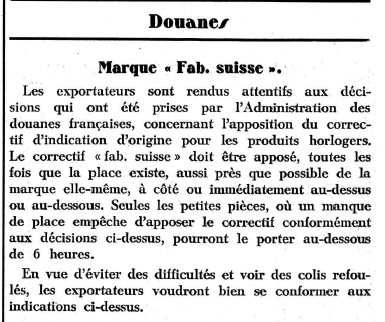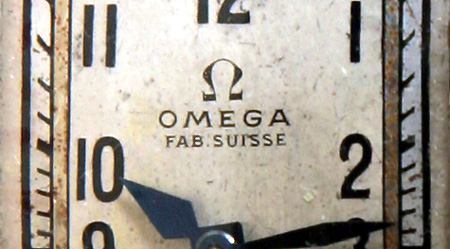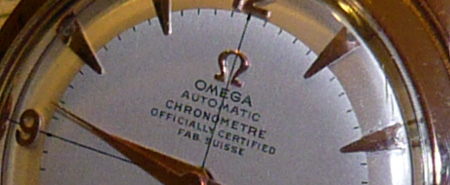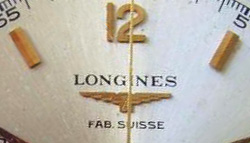The following is a message posted on the Horological Meandering discussion forum, by Marv, on June 14, 2011, addressing the question of why certain watches bear the marking, “Fab. Suisse”.
There was a French law (Art 15. de la loi du 11 janvier 1892) that said that it was prohibited to import into France any product whose brand, name, sign or mark could mislead the consumer, in the sense that it could be understood as having been produced in France whereas it was not the case.
In 1924, a very strict interpretation of that law applied: a brand name that had a “French” origin or meaning could be considered on its own as a misleading mark! Even a brand with a foreign name, but with one subsidiary in France, was concerned! Therefore, many Swiss brands were concerned by this strict rule.
In order to be allowed to import watches into France, many Swiss watchmakers had to add a “legal rider” on the dial to explicitly mention the Swiss origin: “Importé de …“, “Fabrique en …“. There was a tolerance for the watches whose dial was too small to have the whole rider printed. In that case, the short “Fab. Suisse” was accepted.
You will find below a dial of a 1934 Reverso.
In 1936, in the document linked by “Nickd” [in a previous discussion forum message], another restriction was made: the rider for watches had to be placed very close to the brand name, and not at 6 o’clock any more.
Hereafter is the dial of my Omega T17. circa 1936
This French specificity continued to be valid in the following decades.
Below my Reverso post-1937
Please note that there is enough space for the full “Fabrique en Suisse” below Jaeger-Lecoultre.
Seamaster from 1953
Futurematic from the 50s
And finally a Longines from the 60s
Now, concerning the date when the “Fab. Suisse” ended, I am not sure it can be precisely established.
The law that protects customers against misleading marks on a product has never been abrogated (cf current Art. 39 Code des Douanes)
But there has been more and more tolerance: To be considered as misleading, the marks displayed on the product must be really misleading. And even in that case, there is more flexibility regarding the rider and where to place it : e.g. the use of Acronyms or English expressions such as “made in …” is now fully accepted.
In parallel, the country of origin has moved from the field of “customs” to the field of “marketing”. Custom constraints have been reduced from the 60s (Kennedy Round, EEC-Switzerland agreements); whereas the use of the “Swiss Made” label has been strongly marketed.
++++++++++++++++++++++++++++++
Marv wanted me to point out the excellent resource the doc.rero.ch provides for vintage watch collectors. The scan of all the issues of “La Fédération Horlogère” is a real gold mine. For example, concerning the following discussion, one can look at the issue published on the 24th of October, 1925.






